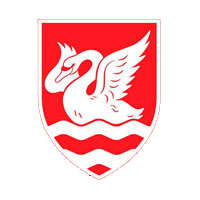
The University of Buckingham (UB) is a non-profit, private university in the UK and the oldest of the country's five private universities. It is located in Buckingham, England, and was founded as the University College at Buckingham (UCB) in 1973, admitting its first students in 1976. It was granted university status by royal charter in 1983. Buckingham offers bachelor's degrees, master's degrees and doctoral degrees through five "schools" (or faculties) of study.
The university was closely linked to Margaret Thatcher, who as Education Secretary oversaw the creation of the university college in 1973, and as Prime Ministerwas instrumental in elevating it to a university in 1983 – thus creating the first private university in the UK. When she retired from politics in 1992, Margaret Thatcher became the university's second chancellor, a post she held until 1998.
The university's finances for teaching operate entirely on direct student fees and endowments: it does not receive state funding (via HEFCE or otherwise). It has formal charity status as a not-for-profit institution dedicated to the ends of research and education.
The university is a member of the Independent Universities Group, created in January 2015 by eight non-profit and for-profit institutions with degree-awarding powers and/or university title. The group's aim is to be "the Russell Group of the alternative sector" and to dissociate its members from more "dodgy" for-profit colleges.The university is one of the twenty-six English universities with a School of Medicine, i.e. it trains doctors at undergraduate and postgraduate level.
Campus
A weir and mill that fall within Buckingham University's Hunter Street campus.
Tanlaw Mill, formerly the old Town Mill (OTM)
Near the centre of the town of Buckingham is the riverside campus, which is partly contained within a south-turning bend of the River Great Ouse. Here, on or just off Hunter Street, are some of the university's central buildings: Yeomanry House (which contains the reception and central administration); the Anthony de Rothchild building (which contains Business and Economics); the Humanities Library; and also some of the student accommodation, looking northwards across the river. Prebend House, a recently restored Georgian house, contains parts of the department of Politics and also Economics. On the other side of Hunter Street, on the so-called 'island', is the Tanlaw Mill, one of the university's social centres – with the main refectory, the Fitness Centre, and the Students' Union Office.
Overlooking this site, on the hill above, is the extensive Chandos Building. This complex contains the main teaching areas for English Literature, English Language, Journalism, Modern Foreign Languages, and the Foundation programmes, and also some of the teaching rooms and one of the lecture theatres for Medicine. It also houses the Ian-Fairburn Lecture Theatre, the largest lecture theatre on the river-side site. Adjacent to the Chandos Building, is the Department of Education. This has both a research arm, and also a teacher training (PGCE) faculty.
Further on, up the hill, on the London Road, is another element of the campus, in particular the School of Law, which is housed in the Franciscan Building, surrounded by other student accommodation blocks. This is opposite the swimming pool and leisure centre. The university has been expanding in recent years. It has acquired a new site on the west side of the river, which will increase the capacity of the river-side campus as a whole. Teaching on some master's degrees takes place in London, in Grosvenor Place, at the home of one its partner institutions: the European School of Economics, and some Life Science programmes are also run in Central London, in conjunction with Medipathways College (see below).

